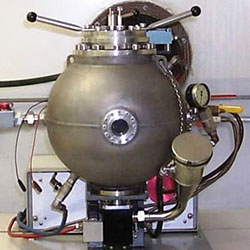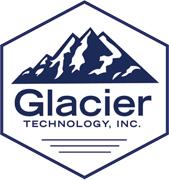Dust Testing

Dust testing services are a requirement for process applications that produce potentially combustible powder or dust. When in the form of a dust cloud, combustible dust will explode if exposed to an ignition source. The test results in a material being classified as either Type A — Explosible — or Type B — Non-Explosible.
In some cases, documentation may already exist to help you determine if the dust from your materials is explosive, requiring protection for your employees, equipment, and facility. In the event that documentation for your materials is not available, dust testing of your materials should be made at a facility using ASTM (American Society for Testing and Materials) and ISO (International Standard Organization) procedures.
Glacier Technology can assist you with dust testing services for your materials using the latest standards and procedures. Our team will recommend combustible dust solutions to help you achieve compliance and avoid the risk of a dust explosion in your process.
- Kst
- Pmax
- Mean Particulate Distribution Size
- MEC
- MIE
- LOC
- Moisture Content
Kst
Kst is the rate of combustion and dust deflagration index, which measures the relative explosion severity compared to other dusts. The larger the value for Kst, the more severe the explosion. Kst provides the best “single number” estimate of the anticipated behavior of a dust deflagration.
- Any combustible dust with a Kst value greater than zero can be subject to dust deflagration
- Used to determine appropriate dust collector and explosion isolation equipment selections
Pmax
Pmax is the maximum explosion overpressure generated in the test chamber.
- Used to determine appropriate dust collector and explosion isolation equipment selections
- Used to evaluate building classification and determine an appropriate building design, including how much pressure interior walls need to withstand and an appropriate blast wall relief pressure
Mean Particulate Distribution Size
Mean Particulate Distribution Size
- The smaller the particle, the more combustible the dust is (unless the particle is too small for combustion to occur)
- Used to determine appropriate filter selections
- Testing facilities may sieve the dust prior to testing to represent the worst-case scenario
- If the dust being tested will not become smaller throughout processing procedures, consider requesting the dust to be “tested as received”
MEC
MEC is the minimum explosible concentration, which measures the minimum amount of dust dispersed in air required to spread an explosion.
- The MEC is analogous to the Lower Flammable Limit (LFL) or Lower Explosive Limit (LEL) for gases and vapors in air
- Used to evaluate the level of hazard in material handling or processing, based on the quantity of dust present vs. quantity of dust required to support combustion
MIE
MIE is the minimum ignition energy, which predicts the ease and likelihood of ignition of a dispersed dust cloud.
- Used to evaluate the level of hazard in material handling or processing and the need for electrical classification, based on the MIE required to support a combustion vs. potential sources of ignition in material handling or processing
- If ignition sources cannot be eliminated, measures may be taken to minimize risk of ignition, for example, reducing the amount of dust below the MEC or inerting the air surrounding dust
- Testing facilities may also test the MIE or temperature to ignite a layer of dust à represents different possibilities for ignition of dust
LOC
LOC refers to limiting oxygen concentration.
- Used to determine the minimum percentage of oxygen required to support a combustion
- Hazards may be controlled via inerting gas to decrease the level of oxygen below the LOC – level of oxygen shall be monitored
Moisture Content
Moisture Content refers to the percentage of moisture in material.
- The drier the dust, the more combustible the dust
- The higher the degree of moisture in the dust, the more likely the dust is to conglomerate, clogging ductwork, and filters; also the less easily it will descend on angled surfaces
- Used to evaluate levels of combustibility the dust may exist at different processing procedures and to determine appropriate filters, collector styles and minimum sloping of equipment (hoppers, ductwork, etc.)
- Testing facilities may dry dust prior to testing to represent the worst-case scenario
- If the dust will not become drier throughout processing procedures, consider requesting the dust to be “tested as received”
